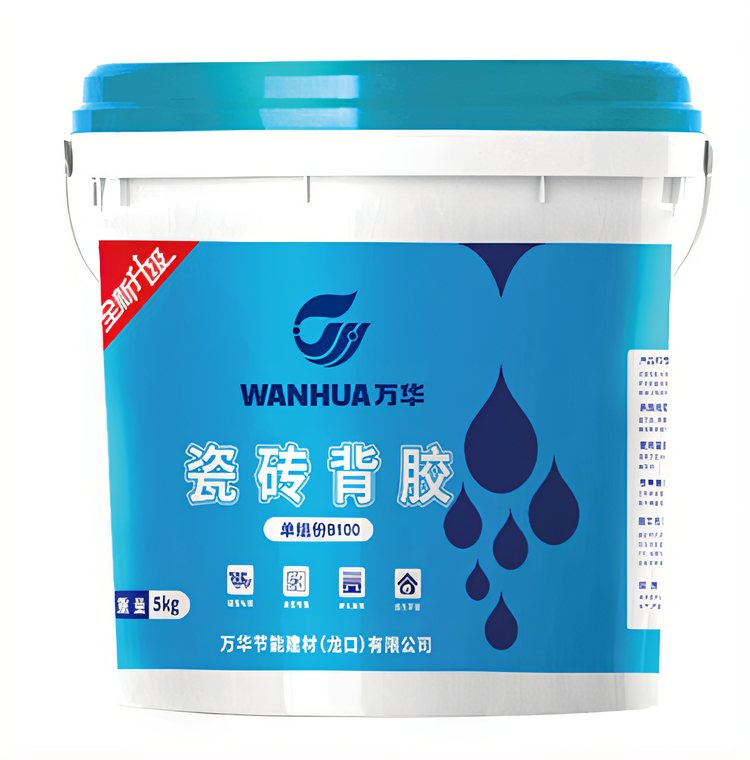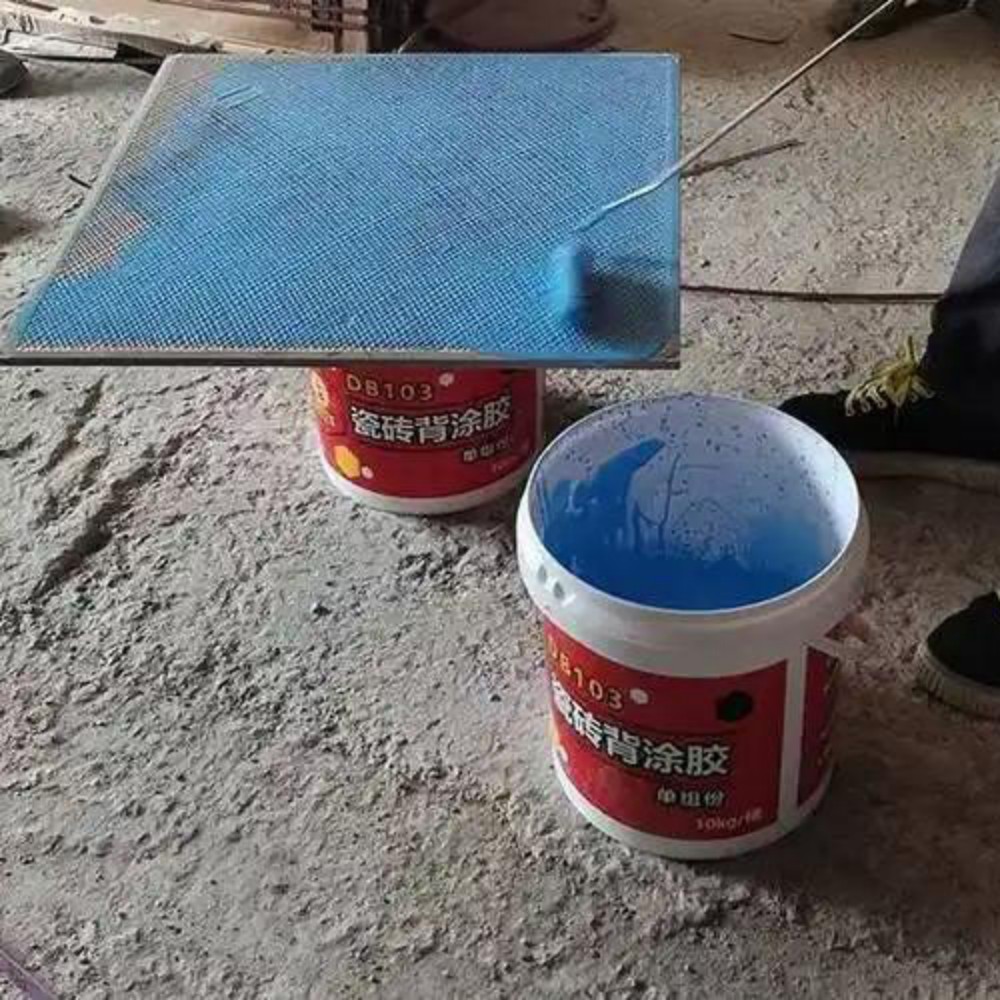

In the process of tiling during home decoration, tile back adhesive plays a crucial role. When applied to the back of tiles, it can significantly improve the bonding strength between tiles and bonding materials, fundamentally solving the tricky problems such as hollowing and falling off that are common during wet tiling. Therefore, it has become a preferred material for many families during decoration. However, in actual construction, many workers encounter the troublesome "condensation polymerization" phenomenon after applying the back adhesive, but it is difficult to accurately identify the cause. This not only affects the construction progress but also hidden dangers for the subsequent tiling quality. Today, we will combine the professional experience of Shandong tile back adhesive manufacturers to analyze this problem in detail and provide solutions.
"Condensation polymerization" of tile back adhesive simply means that after the back adhesive is applied, the emulsion inside it will quickly migrate and aggregate to certain unspecified positions. This abnormal phenomenon will directly prevent the back adhesive from forming a complete and uniform film on the back of the tile. Once the condensation polymerization area is large, it will seriously damage the bonding foundation between the tile adhesive and the tile, greatly reduce the bonding strength, and then significantly increase the risk of the tile falling off during use, posing a great threat to the decoration quality and living safety.
So, what exactly causes the "condensation polymerization" of tile back adhesive? After summarization through industry practice, there are mainly the following three key factors:
- During the production and processing of the tile base, it may be contaminated by external oil stains due to problems such as equipment oil stains and raw material residues; during the subsequent transportation and storage process, it may also be further contaminated with oil stains on the back of the tile due to packaging damage, environmental pollution, etc. These oil stains will become an obstacle to the normal film formation of the back adhesive.
- Before leaving the factory, some tiles will be coated with water-based wax as a temporary protective layer to protect the front of the tile from scratches and pollution. However, during transportation, processing or construction, these water-based waxes may accidentally contaminate the back of the tile. Since the water-based wax will form an isolation film on the tile surface, it will seriously affect the contact and bonding between the back adhesive and the tile base, eventually leading to condensation polymerization.
- During the production process of tiles, in order to facilitate their smooth separation from the mold, manufacturers will add mold release agents to the mold or the tile surface. If the mold release agent remaining on the back of the tile cannot be completely cleaned before the tile leaves the factory, these mold release agents will continue to adhere to the back of the tile. When applying the back adhesive, the mold release agent will destroy the uniformity of the back adhesive emulsion, causing the emulsion to aggregate and fail to form a continuous film, thus resulting in the condensation polymerization problem.
In response to the above reasons, the core of solving the "condensation polymerization" of tile back adhesive lies in thoroughly cleaning the contaminants on the back of the tile. It should be noted that oily films formed by water-based wax, mold release agent and oil stains have strong adhesion and are difficult to completely remove by ordinary wiping methods, which cannot meet the cleaning standards required for back adhesive construction. Therefore, it is recommended to use a steel wire brush to carefully polish the back of the tile, and remove the oily film, mold release powder, oil stains and other contaminants on the tile surface through physical friction. After polishing, use a clean rag or paper towel to wipe off the dust and debris on the back of the tile to ensure that there are no impurities left on the back of the tile. After the back of the tile is dry, apply the back adhesive. This can effectively avoid the occurrence of condensation polymerization, ensure the bonding effect of the back adhesive, and provide a reliable guarantee for the tiling quality.
The above is the professional knowledge shared by Shandong tile back adhesive manufacturers on dealing with the "condensation polymerization" of tile back adhesive. We hope it can provide practical references for the majority of decoration practitioners and owners. If you want to know more about related industry knowledge, welcome to pay continuous attention to the manufacturer's website.

